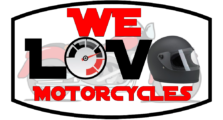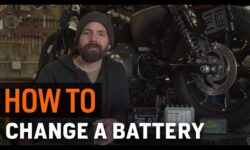Motorcycle Mythbusters
If you’re like me, you’re fascinated by the hit Discovery Channel show MythBusters. The hosts address various questionable assertions or videos, test them, and then declare whether that myth has been confirmed or busted. The program got me to thinking the other day about motorcycle myths, things that have become “common knowledge” but often are not completely true. Here is a selection of such motorcycle myths and the truth—if any—behind them.
“My buddy runs premium gas in his sportbike, and it makes much more power than my cruiser. I figure I’ll run premium too so my bike will make more power!”
The reason sportbikes and other high-performance vehicles run high-octane premium fuel is to prevent pre-ignition, or knocking, in their high-compression motors. Generally, the more you compressed the fuel-air mixture in a motor, the more power it will deliver when you light it off with the spark plug. The problem is that in a high-compression motor this volatile mixture can be compressed so much that it actually explodes from the heat and pressure.
Now, rather than doing a controlled burn in which the flame front pushes the piston down in an orderly fashion, this explosive wave meets the piston on its way up, causing a collision of energies and actually lowering power. We hear it as pinging, or engine knock, and feel the lack of power. If prolonged, it can put a hole in the piston.
High-octane fuel has knock inhibitors that prevent the fuel from exploding at normal operating temperatures and pressures, but it does not provide any additional energy itself. It simply allows the high-compression motor to extract and utilize the power it was designed to provide.

“I don’t care if the owner’s manual says to change the oil every 5,000 miles. I’m going to change it twice that often to protect my motor.”
Okay, let’s think this through. The manufacturers invest millions of dollars in developing and testing their motors to be certain they’ll handle the stresses of use then back them with warranties that often states that if the motor fails, they will pay to fix it. Basically, the manufacturers have a lot invested in having those motors perform well and last a long time. If they say an oil change every 5,000 miles (after the shorter break-in oil change) is adequate, why should we expect them to require fresh fluids any more frequently? I tend to take the manufacturers at their word.
That’s not to say that changing motor oil more frequently will hurt the motor; it likely will not, but it will raise operating costs. More frequent oil changes will also require more frequent trips to the recycler, unless you dump the used oil illegally. Bad for the environment and bad for your biker soul.
The only caveat to this is that if you race your bike or if your usage is unusually harsh or in a dirty environment, then, okay, changing oil more frequently can make sense.
“What the heck does that GVWR figure actually mean anyway?”
This figure, which is listed in your owner’s manual and also on a plaque on the bike (often on the steering stem), shows the Gross Vehicle Weight Rating; it is sometimes shown as Gross Average Weight Rating or GAWR. This figure indicates the maximum weight the bike was designed to carry, including the weight of the bike itself. It is arrived at by considering the bike’s tires, suspension, frame, brakes, and performance characteristics.
You’re almost certainly staying within your bike’s GVWR if you ride solo and keep your machine relatively stock. However, if you ride two-up and have added lots of accessories and luggage, you could be approaching or exceeding the bike’s design parameters.
To get an idea if this is happening, weigh yourself and your passenger in riding gear, along with your luggage and any detachable accessories. Now find the bike’s wet weight either from the dealer or a magazine road test of the model. Total the amounts and compare them with the GVWR figure. If you exceed that figure, try to pare down. If you can’t do so, just note that your bike is technically overloaded and may not ride or handle as easily as you had expected. Riding overloaded also accelerates the wear and tear on tires, suspension, brakes, and your engine. Be kind to your bike and it will be kind to you.

“I’m going to inflate my tires to the figure listed on the sidewall.”
Whoa. That figure on the tire sidewall is maximum pressure, not recommended pressure. Recommended pressures are listed in your owner’s manual and on a plate usually placed near the steering head…the same plate that lists the GVWR figure. For example, the tire shown in the photo carries a figure of 42 pounds maximum. The recommended tire pressure for a solo rider is 34 psi front and 36 psi rear; 42 is the maximum for the rear tire when riding two-up with luggage.
“In order to avoid an accident I had to lay it down.”
Hold on there, bucko. Laying it down is an accident—you didn’t avoid anything. You also have much more control of your bike when it’s upright and you have the grips in your hands rather than when it’s sliding down the road. Might look cool in an action movie—not so much in real life.
“If the brake fluid is low, just top it off and you’re handled.”
As brake pads wear, they become thinner and the level in the brake-fluid reservoir drops a bit to compensate for this. This drop helps you monitor pad wear. If the fluid level drops to or below the “Low” mark on the reservoir, check your brake pads for wear or for a fluid leak. In either case, have the brake system serviced immediately.
“I always warm up my motor for several minutes before riding.”
That might have been good advice for yesteryear’s vehicles, but with today’s improved lubricants and fuel injection it’s less so today. Modern motors warm up more quickly when they’re driven, and the sooner they warm up the sooner they reach maximum efficiency and deliver the best fuel economy and performance. Just don’t rev the engine high during the first few miles while it’s warming up since the oil might not have thinned enough yet to protect fully.
“I use dishwashing or laundry detergent to wash my bike and car. Why use those expensive car or bike products?”
Use the purpose-made cleaners because they’re formulated specifically for a vehicle’s painted finish. Think about it: What is dishwashing detergent made to clean? Grease, dirty dishes, and food waste. When’s the last time you rode through a food fight? No, you want to wash away road grime, not oily food waste. Dish detergent can strip off a vehicle’s wax finish. Use a car/bike wash that has been formulated to clean without removing wax. Also, stay away from pressure washers, which can compromise brake lines and electrical wires.
Article Source: http://www.motorcyclecruiser.com/motorcycle-mythbusters



